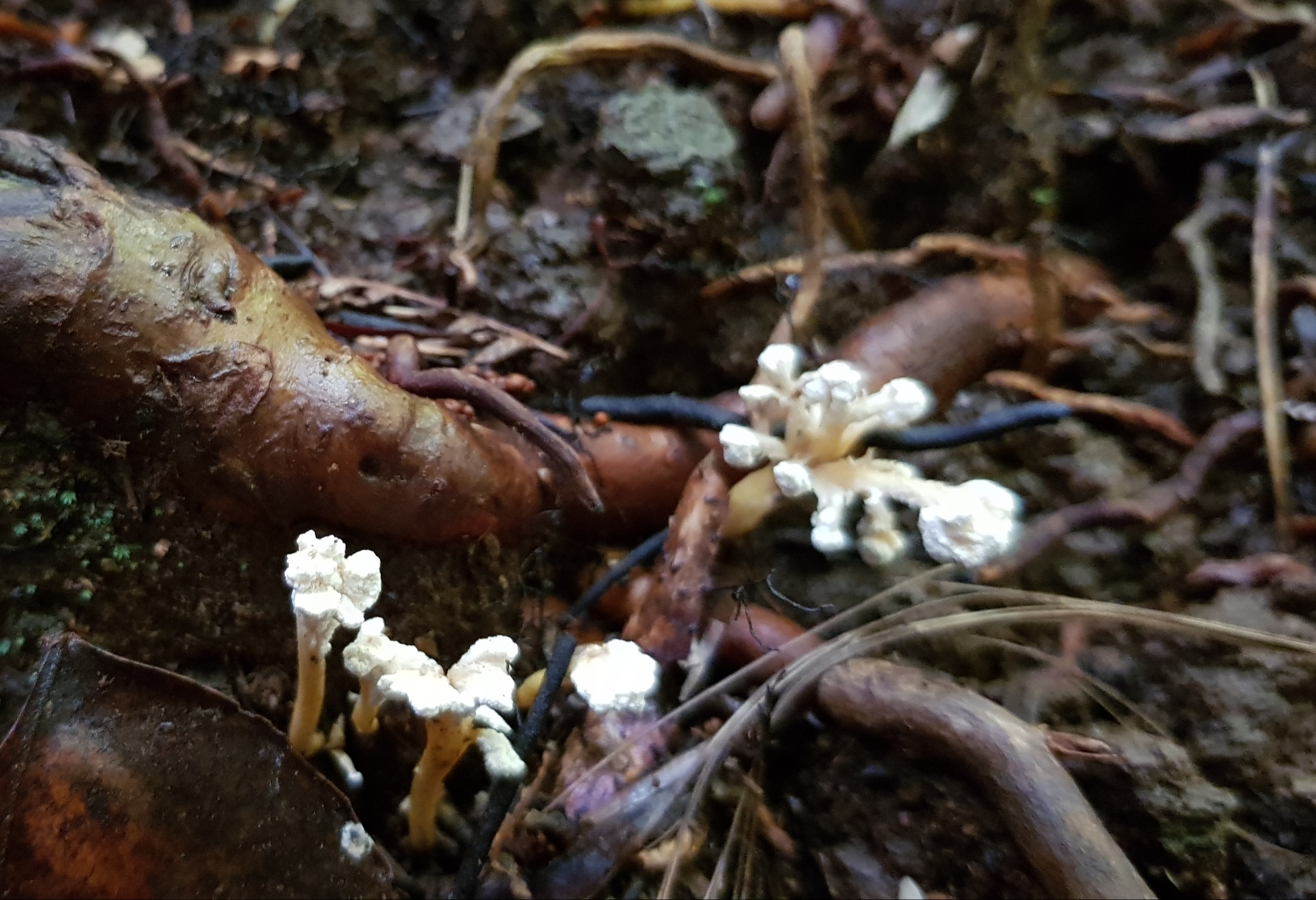I suspect many of those reading (like many of my friends) will have watched the series The Last of Us. (I haven’t, because I’m fairly sure I’d be spending a fair bit of time with my eyes shut!¹)
What you might not realise is that the fungal “protagonist” (for want of a better word) is actually a real thing – though thankfully the bit about it infecting humans is entirely fictional. Over at Your Local Epidemiologist, Katelin Jetelina and Cassandra Quave have written a great blog post about this particular fungal genus, one which infects a range of insect hosts. I wrote about one example, Ophiocordyceps unilateralis, some years ago: this particular species infects carpenter ants in tropical forests and controls the ants’ behaviour for its own benefit.
At the time I was unaware that there are related species of fungi here in New Zealand, but since I got into finding & photographing fungi, the Ophiocordyceps group has been on my fungus-spotting bucket list. So I was pretty darn excited to actually find a specimen a few days ago, during a bush walk.
The white cauliflower-like structures you can see in the photo below are the fungal fruiting bodies, where the spores are produced. These are shed over the forest floor, where they infect the next generation of hosts. I didn’t dig down into the soil to find the host for this specimen, so can’t be sure exactly which fungal species I’d found. It could be Cordyceps (Isaria) sinclairii, whose spores had infected and consumed the insides of a cicada nymph to form a “vegetable cicada”, with the above-ground part usually growing out of the cicada’s head. There are some good images here. If the host was a caterpillar, the fungal parasite is often Cordyceps robertsii, and the fungus/insect combination is often called a “vegetable caterpillar”. There’s an excellent article on them in NZ Geographic.
Because these fungi are highly specialised to parasitise insects, with their much lower body temparatues, the odds of them suddenly mutating to start zombifying humans is very low indeed. As Jetelina & Quave say,
We will not have mushroom heads running at exorbitant speeds trying to kill us any time soon. While not as sexy, real fungal infections are a major health issue and, with climate change and the rise of antimicrobial resistance, will become even more of one in the future. But if you’re worried about a pandemic, focus on viruses.
¹ I have read the excellent book, The Girl With All The Gifts, though.

